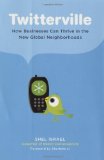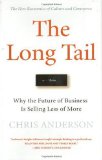Using Social Media: Part 1 – Microblogging
 Update: I’ve edited this post to provide a more objective view of social media and how it can be applied.
Update: I’ve edited this post to provide a more objective view of social media and how it can be applied.
There has been a lot written about how to use social media and what the ROI is from using the various tool. Instead of trying to reach all audiences, I view social media as another communications avenue to expand the reach of your company’s specific audiences and customers.
If I was in an agency, I would list my key objectives and list the tools that would help accomplish these objectives. Since I’m not, I did what was easiest – listing the different tools I use and bullet pointing how each helps me. See how lazy I got going in-house…=)
I originally was going to have one post but I realized this would be too long. As such, I will have a multi-part series focusing on one segment of separate tools. In this first installment, a look at microblogging.
Twittering a Twhirl
I use Twitter as my main microblogging platform, with Twhirl to manage personal and corporate accounts. Check out my previous post on Twhirl for more information.
- Brand awareness: Twitter is gaining traction as viable avenue for brand awareness. I anticipate seeing more company brands using Twitter as a viable communications vehicle. Similar to a website, they will need to have a Twitter handle; otherwise, we’ll start seeing “Twittersquatting” happening.
- Customer Engagement: Twitter is another way for your company to connect and engage with customers by following the customer’s brand, a specific department or individual for updates. This is especially true if your customers tend to be early adopters of technology. I recommend responding to appropriate tweets, especially when your company is mentioned or if people are discussing a related topic.
- Industry Conversations: I recommend following key individuals, such as reporters, analysts and industry luminaries, who are relevant to your company. In this way, you can keep a pulse of topics important to them and provide insight from your company’s perspective.
- Competitive Intelligence: Consider following individuals from competitive companies. This is one way for monitoring what competitors are doing and who they may be speaking with.
- Corporate Marketing: And I purposely put this last. The first tendency is to only tweet updates about what your company is doing – new webinars, white papers, etc. While this is important, you need to balance this with tweets about industry topics that would be of interest to your followers or links to interesting articles. Remember, participate in conversations. It’s not a one-way marketing channel.
Conclusion
While microblogging is still “new” to many marketers and public relationships professionals, it is quickly becoming a de facto need like a website. Since microblogs are bite-sized updates, a more intimate environment is created between the Twitterer and her followers.
A company that engages its audiences with microblogging can further increase its brand awareness, while creating a stronger community.
Retweet this Link
To make is easy for you to tweet this on Twitter, copy and paste this snippet:
RT – Using social media. Part – microblogging: http://twurl.nl/rorux8.
technorati tags: Marketing Social Media Twitter Twhirl Online Reputation Management Brand Customer Competitive Intelligence PR Public Relations
del.icio.us tags: Marketing Social Media Twitter Twhirl Online Reputation Management Brand Customer Competitive Intelligence PR Public Relations
icerocket tags: Marketing Social Media Twitter Twhirl Online Reputation Management Brand Customer Competitive Intelligence PR Public Relations
All content copyright Cece Salomon-Lee, Creative Commons Attribution-Noncommercial-Share Alike 3.0 Unported, with the attribution: By Cece Salomon-Lee, PR Meets Marketing, and a link to the post.
17 Comments
Leave a comment
Additional comments powered byBackType
About
Favorite Service
Recent Comments
- on Going Virtual Isn’t Necessarily the Answer to Replacing Your Physical Events
- on Going Virtual Isn’t Necessarily the Answer to Replacing Your Physical Events
- on Going Virtual Isn’t Necessarily the Answer to Replacing Your Physical Events
- on Going Virtual Isn’t Necessarily the Answer to Replacing Your Physical Events
- on Going Virtual Isn’t Necessarily the Answer to Replacing Your Physical Events
Ads by Google
Favorite Books
Marketing Blogs
PR Blogs
- KD Paine's Measurement Blog
- Micro Persuasion
Virtual Events & Meetings Blogs
- Cisco Virtual Environments
- It's All Virtual
- The Webinar Blog
- Virtual Edge Institute

 Follow
Follow Cece Salomon-Lee is director of product marketing for Lanyon Solutions, Inc. and author of PR Meets Marketing, which explores the intersection of public relations, marketing, and social media.
Cece Salomon-Lee is director of product marketing for Lanyon Solutions, Inc. and author of PR Meets Marketing, which explores the intersection of public relations, marketing, and social media. 



[…] Using Social Media: Part 1 – Microblogging […]
[…] Using Social Media: Part 1 – Microblogging […]
[…] Using Social Media: Part 1 – Microblogging […]
[…] 1) Using Social Media: Part 1 – Microblogging […]
@afhill You’re right. A recent Forrester report had mentioned that only about 30% of b2b marketers are even considering social media, yet, their audiences were increasingly using these avenues for finding information. Interesting opp for those who use it early and often, right?
@ chad Thanks for your comment. I do plan to include some initial results in my last post (sorry, that’s about 2 weeks away =). I think that may be helpful for people who are still trying to figure out the value of engaging these tools as a comprehensive aspect of their marketing/PR programs.
Nice post – I do the same thing using Twitter search. Mostly on the look out for customers that may need assistance.
PS: I wrote a post on my blog on how to combine Twitter and B2B email marketing
@chadhorenfeldt
@csalomonlee – Thanks for the response! My last position was dealing with large retailers, so generally my first tactic when introducing social media is to show people how their brand is being discussed online. There simply doesn’t seem to be the same “buzz” in the B2B arena. I think therefore it may be a bit more difficult to demonstrate the need to be active in social media (but that’s just my perception right now, and I’m hoping to change it! )
)
@afhill I see what you’re saying. What I’ve found is that behind every business is a person. It’s our job as public relations/marketing professionals to target a specific person (audience) for our messages. If we do this well, then we’re able to have a conversation with these folks, as well as their businesses.
Hi there, I’m not concerned about having several twitter accounts (I actually have three myself). I was talking moreso about B2B using social media as a communication medium, not the specific tools. People are motivated to talk, how do you ‘talk’ when your target is a business?
@Mike You’re correct in that the relationships I want to build for my personal brand are somewhat different than those for my company’s brand. Under the company ID it clearly states who is providing the tweets under that account.
@afhill it’s not that difficult to separate the two accounts by using a tool like Twhirl. I just have to be careful to tweet under the proper account. To avoid confusion, I set the window to different size for my company and personal accounts.
Overall, while some of the followers and people are follow crossover, there are some distinct differences too.
I’m still struggling with how B2B can use social media effectively.. there is so much talk about how social media is about individuals. Brands are starting to get in on the conversation, but I can’t yet wrap my head around TWO brands talking.. I’ll be very interested to continue reading your blog to see how you use social media in your work!
– Andrea
@Michael For the most part I think it makes sense for brands to have their own Twitter accounts, separate from the employee or person behind the scenes. Let’s use Cece as an example.
If she were building brand equity for ON24 on Twitter under her own name and then decided to leave the company, she gets to take all of those followers and relationships with her. If she were building those relationships under @ON24, she is building them for the brand and the reigns could easily be passed on to someone else.
Though people keep hammering that consumers want to interact with humans, I don’t think that having an employee tweet under a company brand name is a bad idea. My solution to the argument is simply to mention in the profile bio who it is doing the tweeting. And if the person has their own Twitter account, they can even include their @username in the bio line.
To me this solves the problem of knowing who is behind the brand’s account AND it helps the actual brand own the equity and relationships it has built on Twitter.
thanks for the quick response (email too — I like that).
The reason I ask is that I have found more value using one account to achieve business results…
I wrote about it here: http://www.britopian.com/2008/12/12/yes-brands-do-belong-on-twitter/
and cite Rohit’s claim that companies should hire employees with personal brands.
Either approach can have it’s advantages/disadvantages.
Michael
@Mike thanks for the comment and the link. I’ve already started the process.
@Michael – Yes, I have two accounts. I use Twhirl to manage both of my accounts.
Great post. so I have a question. Do you have two accounts (personal and business)? Just curious.
Michael
[…] How I Use Social Media in My Job: Part 1 – Microblogging « PR … […]
Cece,
Fantastic rundown on how you are using microblogging in your job. You’ve provided a great framework for others to follow when leveraging this type of tool. It’s great to find more examples of B2B marketers utilizing social media.
Also, if you’re ever interested in securing the @ON24 Twitter username, take a look at my article on the topic of reclaiming registered usernames: http://microblink.com/2008/12/21/how-to-get-brandjacked-twitter-accounts-back/ Twitter actually makes it very easy to apply to regain control of usernames.